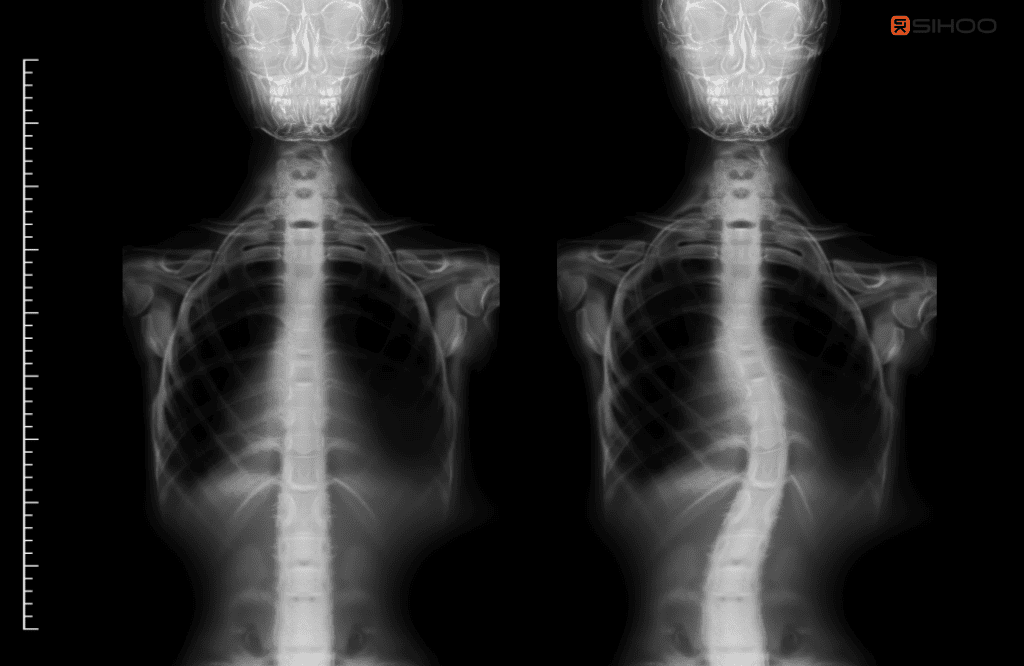Living with scoliosis can make desk work feel tougher than it should. The good news is that small changes to how your ergonomic chair fits can make a big difference. This guide keeps things simple: first, a quick look at what scoliosis is and why it happens; then why the right chair matters; then a short checklist of what to look for.
What is scoliosis?
Scoliosis is when the spine curves and twists to one side. It can affect people of any age. It often starts between 10 and 15 years old, but adults can have it too. Signs may include uneven shoulders or hips and back ache. Treatment depends on age and how severe the curve is; mild cases may simply be monitored.
Why does it happen?
Sometimes the cause is unknown (this is common in teenagers). In other cases it may be present from birth, linked to muscle or nerve conditions, or appear later in life due to age-related changes. If you’re concerned, the sensible route in the UK is GP first, then specialist assessment if needed.
Why the right chair matters
Desk work adds up through the day. If your chair doesn’t fit, you may slump or tense your shoulders, which tires your back and neck. Simple set-up tips help:
- Keep the top of the screen near eye level and about an arm’s length away.
- Set the keyboard just below elbow height so your shoulders can relax.
- Leave a small gap of about 2–3 cm between the front of the seat and the back of your knees.
- Most important of all: change posture often. Don’t freeze in one position.
What to look for (quick checklist)
- Lumbar support that meets your lower-back curve. Best if it moves with you or lets you adjust height and depth.
- Seat depth that suits your legs so you can keep that small knee gap; a depth slider is handy, but a well-matched fixed depth also works.
- Adjustable armrests (3D/4D/6D) so you can type with relaxed shoulders.
- Recline that keeps contact—when you lean back, your lower back shouldn’t “fall into space”.
- Head/neck support if you read or join calls a lot.
- Simple controls so you actually make small tweaks during the day.
Two everyday set-ups
The focus is your needs. The products below are examples that match each set-up—they are not the only options.
Set-up A — Long typing sessions; steady support
What you need: adaptive or easily adjustable lumbar support, multi-way armrests, a gentle working angle, breathable materials, and controls that are easy to use.
Example that fits: Doro C300
- Adaptive lumbar that follows your movement, plus 4D armrests.
- Three recline stops (110° / 120° / 130°) for quick switches between focus and light relax.
- Key numbers: seat height 47–55 cm; seat depth 42.5 cm; max load 136 kg.
- UK store typically shows free shipping, 30-day returns, and a 3-year warranty.
Why it suits this set-up: moving lumbar and multi-way armrests help you keep calm shoulders while you type, without losing lower-back contact.

Doro C300 Ergonomic Office Chair
Self-adaptive lumbar support with smart weight-sensing tilt and breathable mesh—perfect for all-day gaming comfort without manual adjustments.
Set-up B — Lots of meetings or reading; a “held” recline
What you need: a stronger linked recline that keeps support as you lean back, 6D armrests, a cushioned landing when you recline, and adjustable back height to suit different torsos.
Example that fits: Doro S300
- “Anti-gravity” linked recline with three positions (100° / 110° / 130°) that keeps your back supported.
- 4-spring shock-absorbing seat and 6D armrests; backrest height adjusts through five positions.
- Key numbers: seat height 47–55.5 cm; seat depth 40–47 cm; max load 136 kg.
- UK store typically shows free shipping, 30-day returns, and a 3-year warranty.
Why it suits this set-up: when you swap between upright calls and more relaxed reading, the linked recline keeps support continuous so you don’t have to brace.

Sihoo Doro S300 Ergonomic Office Chair
Aerospace-grade Anti-Gravity suspension creates weightless recline, while 6D armrests and Italian velvet mesh deliver luxury ergonomics.
At-a-glance compare
| What you care about | Set-up A example | Set-up B example |
|---|---|---|
| Core feel | Moving lumbar + steady typing | Linked recline + cushioned landings |
| Armrests | 4D | 6D |
| Recline stops | 110° / 120° / 130° | 100° / 110° / 130° |
| Seat height | 47–55 cm | 47–55.5 cm |
| Seat depth | 42.5 cm | 40–47 cm (adjustable) |
| Typical UK fulfilment | Free shipping · 30-day returns · 3-year warranty | Free shipping · 30-day returns · 3-year warranty |
A two-minute fit check
- Seat depth: sit right back and check for a 2–3 cm gap at the knees.
- Seat height: feet flat (or on a footrest), thighs supported; keep the keyboard just below elbow height and shoulders relaxed.
- Lumbar point: line the support with the waist curve where your lower back starts to arch.
- Armrests: raise so elbows rest lightly and forearms are level with the desk.
- Screen: top near eye level, roughly an arm’s length away.
- Move often: vary your posture through the day—sitting still is the real problem.
Related reading: The 5-Step Office Chair Adjustment Guide That Works
FAQs
Will a chair fix scoliosis?
No. A chair can support you and may help reduce discomfort, but it does not treat scoliosis. Please follow your clinician’s advice.
Mesh or foam—does it matter?
Either can work if the fit and support are right. The key is staying in contact with the backrest and avoiding pressure behind the knees.
What if I’m tall or petite?
Check the numbers. Adjustable seat height and seat depth help cover a wider range. If the figures include your height and leg length comfortably, you’re on the right track.



